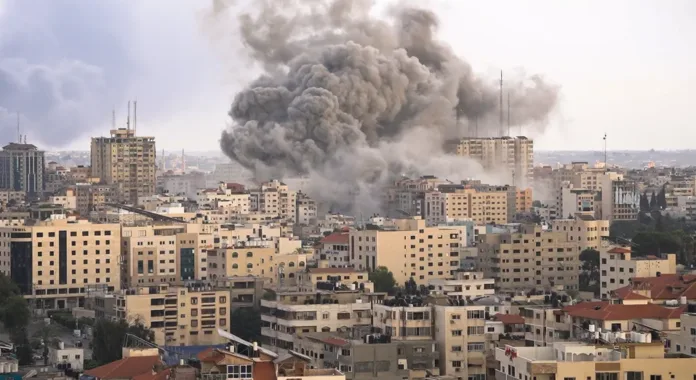Committee to Protect Journalists says Gaza has become the deadliest place for reporters in history
The war in Gaza has become the deadliest conflict for journalists in modern history, with Israel accused of killing 189 Palestinian reporters since October 2023.
The latest atrocity unfolded on Monday when Israeli forces struck Khan Younis’ Nasser Hospital, the last fully functioning major hospital in southern Gaza. The first shell hit a stairwell used by reporters, killing Reuters cameraman Hussam al-Masri. Minutes later, as first responders and journalists rushed to help, a second blast struck the same location. Twenty people died, including five journalists. Dozens were injured.
Among the dead were Mariam Abu Dagga, a freelance photographer for the Associated Press; Mohammed Salama, a cameraman for Al Jazeera; Moaz Abu Taha, a photographer; and Ahmed Abu Aziz, a correspondent for Middle East Eye and Quds News Network. Reuters photographer Hatem Khaled later succumbed to injuries sustained in the second strike.
The incident was caught live on camera, sending horrifying images across the world. Survivors described it as a deliberate “double-tap” attack: a first strike to draw people in, a second to kill those trying to help.
The Israel Defence Forces claimed it had been targeting a “Hamas camera” near media broadcast points. Prime Minister Benjamin Netanyahu called the hospital bombardment a “tragic mishap” and promised an investigation. Yet watchdogs note that previous Israeli probes into journalist deaths have rarely produced accountability.
Embed from Getty ImagesAccording to the Committee to Protect Journalists (CPJ), 197 journalists and media workers have died since the start of the war; 189 were Palestinians killed by Israeli forces. “This is unprecedented,” said Jodie Ginsberg, CPJ’s CEO and a former Reuters journalist. “Even the places they thought were safe aren’t safe. Journalists in Gaza are living the war, reporting it, reliving it, and then sharing it with the world.”
The numbers dwarf global averages. Between 2020 and 2022, CPJ recorded 165 journalists killed worldwide. In Gaza, more have died in under two years than across the entire globe over the three years prior. Many were killed alongside their families when residential buildings were hit. Others, investigators suggest, appeared to be directly targeted.
Ginsberg said survivors feel ignored. “Imagine living through a war and reporting on it every day for two years, and feeling as if no one is listening. They’re reporting on starvation while experiencing starvation.”
International law protects both journalists and hospitals in wartime. Attacks on them can constitute war crimes. Analysts warn that Israel’s repeated strikes on areas known to house media workers undermine any claim of accidental targeting.
One survivor, journalist Mohammed Mhawish, previously described an airstrike that collapsed his family home while he and his young child were inside. “They’re exhausted, demoralised, and desperate,” Ginsberg explained. “Journalists hope their documentation will lead to action, but for them, the situation has only worsened.”
Despite global outcry, the killings continue. With Gaza under near-constant bombardment and few safe zones remaining, CPJ has warned the world risks normalising the systematic targeting of reporters.
For those on the ground, the cost of telling the story of Gaza is increasingly their own lives.
